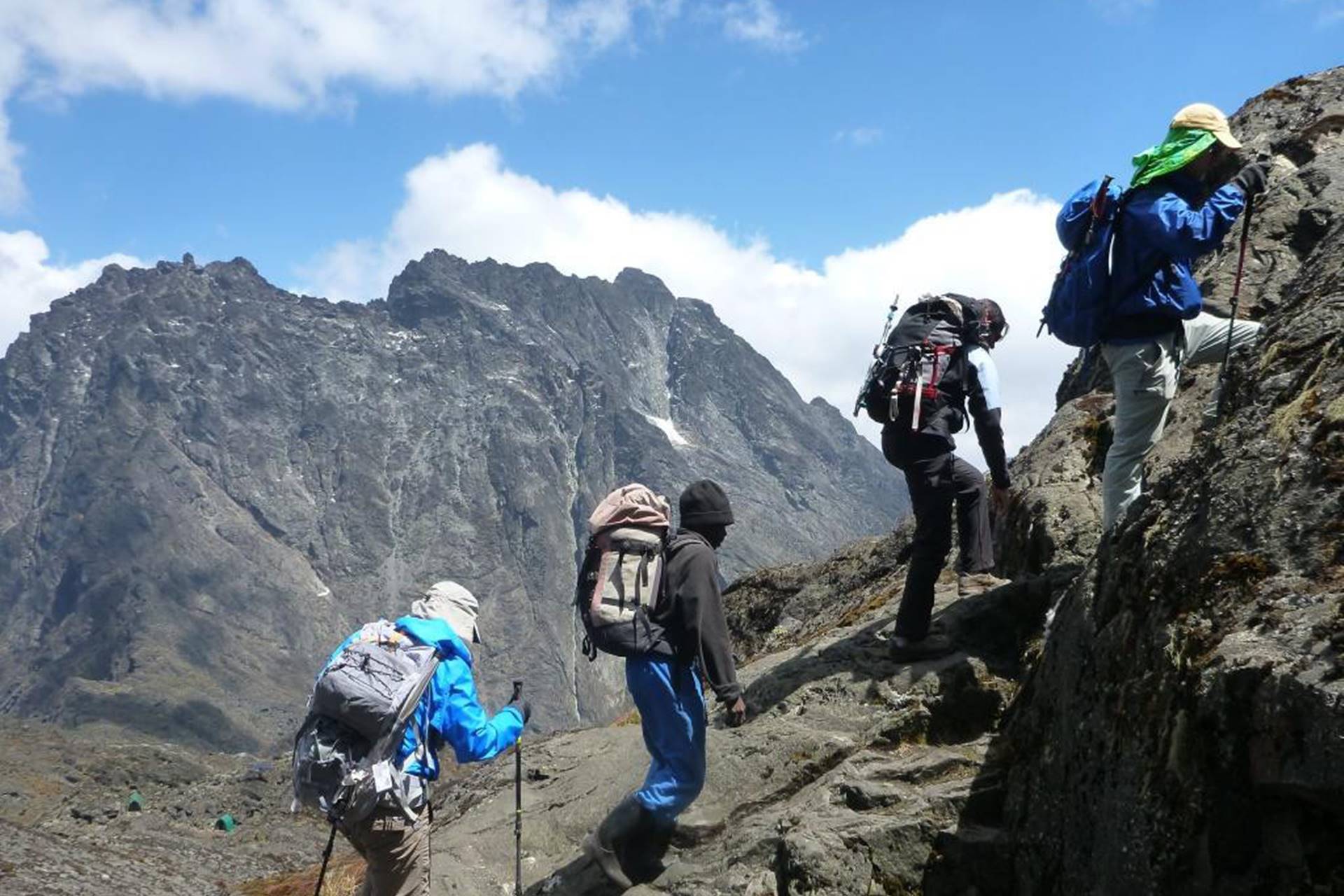Uganda, often referred to as the “Pearl of Africa,” is a land of astonishing natural beauty and diverse landscapes. Beyond its renowned wildlife and gorilla trekking opportunities, Uganda offers a treasure trove of hiking trails that take you deep into its wild heart. From mist-covered mountains to lush forests, hiking in Uganda is a gateway to unforgettable experiences and breathtaking views. Here’s a glimpse into the world of hiking in Uganda’s wild.
Known as the “Mountains of the Moon,” the Rwenzori Mountains offer some of the most challenging and rewarding hikes in Uganda. Explore a world of moss-covered trees, unique flora, and dramatic landscapes as you ascend to the peaks. The Rwenzori Mountains National Park is a UNESCO World Heritage Site, and the hike to Margherita Peak, the highest point, is an adventure for the intrepid.
2. Bwindi Impenetrable Forest:
Famous for its gorilla trekking, Bwindi Impenetrable Forest also boasts lesser-known hiking trails that wind through dense jungles, across gushing rivers, and past cascading waterfalls. These hikes provide a chance to spot various bird species, monkeys, and other wildlife while immersing yourself in the lush greenery.
Straddling the border between Uganda and Kenya, Mount Elgon offers a range of hiking options suitable for different skill levels. The trek to the Wagagai Peak rewards hikers with sweeping views of the caldera and surrounding landscapes. Mount Elgon’s unique flora and fauna, including giant lobelias and rare birds, make every step a discovery.
The Sipi Falls area is a hiker’s paradise, with a network of trails that lead you to stunning waterfalls, rolling hills, and picturesque villages. The main attraction is the Sipi Falls trio, a series of waterfalls that tumble down from the slopes of Mount Elgon. Hiking in this region offers both natural beauty and cultural encounters with local communities.
5. Mount Moroto:
For those seeking a more off-the-beaten-path experience, Mount Moroto in the Karamoja region is an emerging hiking destination. The hike to the summit promises panoramic vistas of the semi-arid landscapes and the opportunity to engage with the Karamojong people, known for their rich cultural heritage.
6. Queen Elizabeth National Park Trails:
Not all hikes in Uganda are about mountains. Queen Elizabeth National Park offers guided nature walks and hikes that let you explore savannas, forests, and wetlands. These walks provide opportunities to spot wildlife like elephants, buffalo, antelopes, and a variety of bird species.
Preparation and Considerations:
Before embarking on a hiking adventure in Uganda’s wild, here are some important considerations:
Permits and Guides: Some trails, like those in national parks, may require permits and guides for conservation and safety purposes. Check the regulations and make necessary arrangements.
Physical Fitness: Many hikes in Uganda involve varying levels of difficulty. Choose hikes that match your fitness level and experience, and be prepared for challenging terrain.
Weather and Seasons: Uganda’s climate can vary greatly depending on the region and altitude. Be prepared for changing weather conditions, and plan your hikes accordingly.
Responsible Travel: Respect the natural environment and local communities. Follow the Leave No Trace principles, and engage with locals in a respectful and culturally sensitive manner.
Hiking in Uganda’s wild is a chance to connect with nature, immerse yourself in diverse ecosystems, and discover the hidden gems of this remarkable country. As you traverse its trails, you’ll not only witness breathtaking landscapes but also create lasting memories of adventure and exploration.


